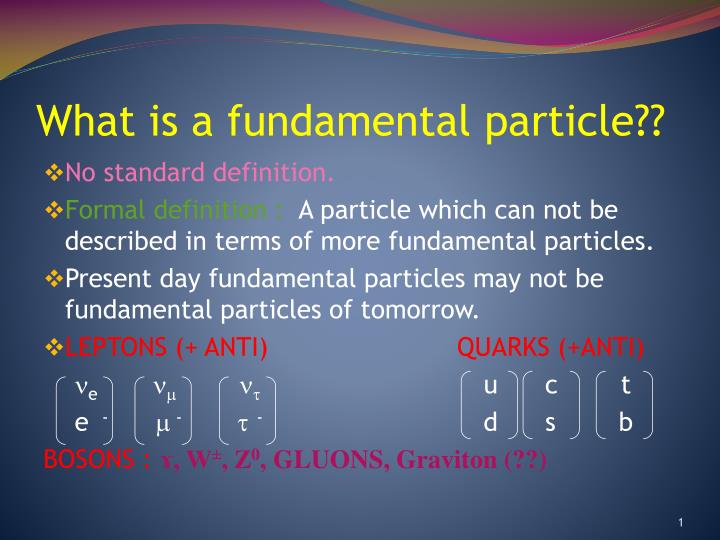
/GettyImages-475158089-57f676975f9b586c35f96dc5.jpg)
Still another kind of boson, called a Higgs boson, is thought to be the source of mass in other particles, but this particle also has not actually been observed. A fourth force, the gravitational force, is believed to be transmitted by particles called gravitons however, the particles have not yet been observed. The bosons that transmit the strong nuclear force are called gluons, those that transmit electromagnetic forces are photons, and those transmitting the weak force are known as weak bosons. Bosons have whole integer spins, and they contain an even number of quarks. Fermions have spins measured in half numbers, and they contain an odd number of quarks. Bose).įundamental bosons differ from fermions in spin and the number of quarks they contain. All these forces are transmitted by particles called fundamental bosons (named after Indian physicist S. The forces are the strong nuclear force (or strong interaction), the weak nuclear force (or weak interaction), and electromagnetism (which includes light, x rays, and all the other electromagnetic forces). There are also fundamental forces acting on matter these have their own sets of fundamental particles. A neutron contains one u quark (+ ⅔) and two d quarks ( − ⅓)( − ⅓) for a total charge of zero.

A proton is made from two u quarks (+ ⅔)(+ ⅔) and one d quark ( − ⅓), giving a total charge of +1.

Protons and neutrons are made of up (u) quarks (which have a charge of + ⅔) and down (d) quarks (which have a charge of − ⅓). Quarks come in six different types, or "flavors": up and down, top and bottom, and charm and strange. Both protons and neutrons are classified as baryons, composite particles each made up of three quarks. They are the fundamental particles that make up protons and neutrons (as well as mesons and some other particles). Quarks, on the other hand, are influenced by the strong nuclear force. Leptons include electrons (along with muons and neutrinos) they have no measurable size, and they are not affected by the strong nuclear force. FermionsĪt the start of the twenty-first century, scientists believe that all matter is made up of tiny particles called fermions (named after American physicist Enrico Fermi). There are in actuality hundreds of subatomic particles that have been observed, but many of them are unstable. (A proton is a positively charged particle that weighs about one atomic mass unit a neutron has about the same mass but no charge and an electron has a much smaller mass and a negative charge.) Protons and neutrons make up the tiny nucleus of an atom, while electrons exist outside the atomic nucleus in discrete energy levels within an electron "cloud."īy 1970 it began to appear that matter might contain even smaller particles, an idea suggested in 1963 by American physicist Murray Gell-Mann (who called the particles quarks ) and independently by American physicist George Zweig (who called them aces ). As recently as 1900 most people believed that atoms were the tiniest particles in the universe.īy the 1930s, however, it was clear that atoms were made up of even smaller particles -protons, neutrons, and electrons, then considered to be the fundamental particles of matter.

The highest energy scattering experiments involving electrons reveal no internal structure for electrons.Fundamental particles are the elementary entities from which all matter is made. No decay of electrons has been observed - decay into other constituents would of course prove that it is not a fundamental particle. The electron was found to have a definite charge to mass ratio, e/m e, in early experiments and later was found to have an intrinsic spin of 1/2. This document chooses the electron and seeks to make that defense. To suggest that a particle is a fundamental particle in this sense is indeed a bold claim and requires defense. The concept is that these fundamental particles are not made out of anything else - they cannot be further subdivided into smaller constituents. The standard model of particle physics suggests that there are fundamental particles called leptons and quarks which are the basic building blocks of matter, i.e., they are seen as the "elementary particles". What evidence suggests that the electron is a fundamental particle? What evidence suggests that the electron is a fundamental particle?


 0 kommentar(er)
0 kommentar(er)
